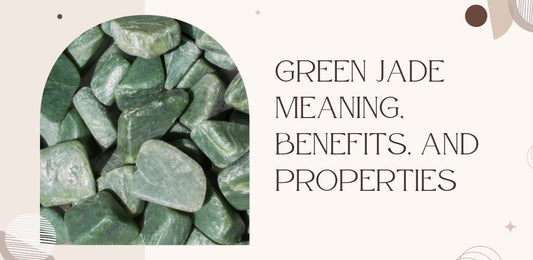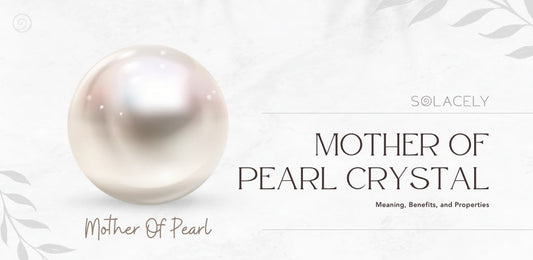The tradition of birthstones, special gems linked to the month of one's birth, has a long history that crosses many cultures. Each stone is thought to have special powers and qualities, offering more than just beauty. October is special because it has two birthstones: Tourmaline and Opal. These gemstones, each with their own unique colors and charm, bring a mix of beauty and mystery to those born in this month
Meaning Of October Birthstone
October is a month full of bright colors, which is reflected in its birthstones: Opal and Tourmaline. Opal, the traditional October birthstone, has a long history that goes back to ancient India, where it was called upala, meaning "precious stone." Opal is famous for its beautiful rainbow colors that make each stone unique.
Tourmaline, the modern October birthstone, is just as special with its wide range of colors. The name Tourmaline comes from the Sinhalese word toramalli, meaning "stone with mixed colors," which perfectly describes its variety. Tourmaline is loved for its ability to inspire creativity, with colors ranging from pink and red to green and bright blue.
Both Opal and Tourmaline show the rich diversity and creative spirit that people born in October often have.
Why Two Stones for October?
October has two birthstones due to the efforts to modernize and broaden the options available for each month. In 1952, the National Association of Jewelers aimed to standardize birthstones, selecting stones that reflected both traditional preferences and the evolving styles of the time.
For October, Opal was the traditional choice, but concerns about its delicate nature and a perception that it was overly feminine led to the addition of Tourmaline. Over time, the list was refined further, and now October is associated with both Opal and Pink Tourmaline, offering a blend of classic and contemporary options for those born in this month.
Tourmaline Birthstone : A Spectrum of Beauty
Tourmaline, the birthstone for October, is a gemstone celebrated for its vibrant array of colors and powerful healing properties. Its rich history and diverse origins make it a truly remarkable stone.
Tourmaline Birthstone Meaning & History
Tourmaline, known for its mesmerizing spectrum of colors, has captivated people throughout history. This gemstone, with its rich hues and mysterious allure, has journeyed from deep within the Earth to become a treasured adornment. Tourmaline’s history is steeped in reverence, as it has long been believed to hold powerful healing energies that balance both body and mind. As a birthstone, Tourmaline serves as a reminder of the strength found in diversity and the importance of staying true to oneself.
Where Is the Tourmaline Found?
Tourmaline is found in various regions across the globe, with significant deposits located in Brazil, Afghanistan, Pakistan, Africa, and the United States. Brazil is renowned for producing a wide variety of Tourmaline colors, including the famous Paraíba Tourmaline, known for its electric blue and green hues. Other notable sources include Madagascar, Nigeria, and Sri Lanka, each contributing to the gemstone’s rich diversity of colors and forms.
Properties
-
Healing Properties :Tourmaline is celebrated not only for its stunning beauty but also for its powerful healing properties.
-
Detoxification: It is known to promote detoxification, enhance emotional well-being, and dispel fears, negative thoughts, and anxieties.
-
Balance Energies : Tourmaline’s ability to balance energies makes it a valuable stone for both physical and emotional healing.
-
Enhances Creativity :Artists and writers have long been drawn to Tourmaline for its ability to spark creativity and inspire new ideas.
-
Symbolic Significance :The stone’s diverse colors add to its symbolic significance, with each hue representing different aspects of life’s journey.
-
Personal Growth :Whether worn as jewelry or used in meditation, Tourmaline serves as a powerful crystal for personal growth, resilience, and protection, embodying the strength and beauty of the natural world.
Opal Birthstone Meaning & History
Opal, renowned for its enchanting play-of-color, has captivated people throughout history with its shimmering beauty and mystical allure. This gemstone, with its ever-changing hues and captivating sparkle, has journeyed from deep within the Earth to become a cherished adornment. Opal’s history is rich with reverence, as it has long been believed to hold powerful energies that enhance creativity, inspire love, and promote emotional balance. As a birthstone, Opal serves as a symbol of hope, purity, and the importance of embracing one’s true self.
Where Is Opal Found?
Opal is primarily found in Australia, which is known for producing the finest quality Opals, including the famous Black Opal with its vibrant colors. Other notable sources include Ethiopia, Mexico, and Brazil, each contributing to the gemstone’s wide variety of forms and colors. Australia’s vast deposits make it the leading source of this mesmerizing stone, adding to its global significance and allure.
Storage and Exposure
Store Tourmaline and Opal separately from other jewelry to prevent scratches, ideally in soft pouches or fabric-lined jewelry boxes. Tourmaline should be kept away from extreme heat and direct sunlight to prevent color fading. Opals, which need moisture to prevent cracking, should be stored in a damp cloth within a sealed plastic bag when not in use for long periods. Additionally, avoid exposing both stones to harsh chemicals found in cleaning agents and cosmetics. Opals are particularly sensitive to drastic temperature changes, so it’s best to remove them before activities that might involve hard knocks or exposure to chemicals.
By following these care tips, you can preserve the beauty and energetic properties of both Tourmaline and Opal, ensuring they continue to support you effectively.
Further Reading: How to cleanse and charge crystals
Key Differences in Care Requirements
While both stones share some common care tips, such as cleaning with mild solutions and storing separately, there are notable differences due to their composition and hardness. Tourmaline's greater hardness allows for a bit more resilience to daily wear, whereas opal's delicate nature requires avoiding water and heat exposure to prevent cracking or drying out. Understanding and respecting these differences will ensure that your October birthstones remain as dazzling as the day they were acquired.
October’s birthstones, Tourmaline and Opal, offer a stunning blend of beauty and symbolism, each with unique care needs. Tourmaline, with its vibrant colors and durability, can withstand daily wear but requires careful storage and regular cleaning. Opal, known for its delicate play-of-color, demands gentler handling, avoiding heat and water to maintain its brilliance. By understanding the distinct characteristics of these gemstones and following proper care routines, you can ensure they remain as captivating and meaningful as eve





















